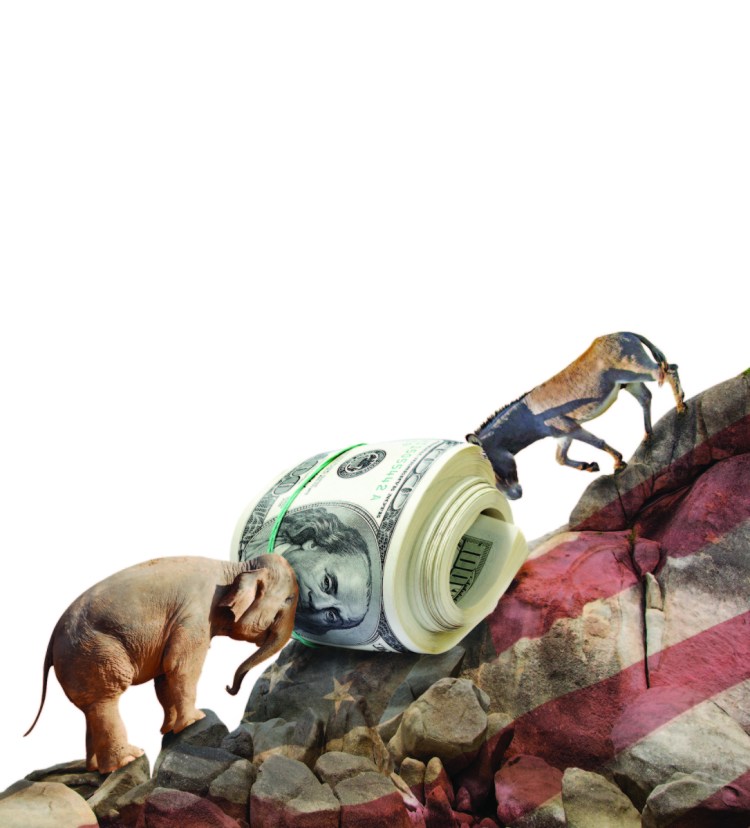First of all, the economy itself is really strong,” Commerce Secretary Wilbur Ross told CNBC on Tuesday, citing such factors as low unemployment and high consumer confidence. “It’s the press that seems more obsessed with what may lie in the future.” Policymakers should share that obsession, though, because America is at once booming and fading.
Last week, for example, the Centers for Disease Control and Prevention confirmed that U.S. life expectancy declined for a third straight year in 2017 – a calamity last observed in the 1910s amid a global flu pandemic and World War I.
Gross domestic product is surging and now stands nearly 20 percent above its pre-recession level, yet the Economic Innovation Group’s Distressed Communities Index reports that the most prosperous 20 percent of U.S. ZIP codes account for the entire net increase in employment over that period. Across the remaining 80 percent of the United States, fewer jobs exist now than in 2007.
In a world that revolves around sound bites, headlines and tweets, the art of holding two ideas in one’s head has lost its appeal. But that is what understanding this moment in America requires.
The economy is booming, as most every metric will attest. But it is doing so in cyclical terms, in an upswing following a deep recession. The economy’s long-term trajectory, at least for less-educated Americans, remains downward. We have yet to grapple with the problems that have degraded the U.S. labor market for decades, so we have no right to expect improving results.
The easiest way to appreciate the predicament is by comparing boom to boom. Obviously things look much better than in 2010. But how do they compare with 2007, at the peak of the last business cycle, or with peaks in 2000 or 1989? Not well.
The unemployment rate is low, but millions more men are no longer even looking for work. The 19 percent of men between the ages of 25 and 54 not working full time in 2018 is much higher than the 16.6 percent in 2007, which was higher than the 14.4 percent in 2000, which was higher than the 13.6 percent in 1989.
Even more striking, that 19 percent figure is worse than the highest levels reached during recessions before the Great Recession.
By the pre-2007 standard, today’s labor market would be the worst recession year on record. A similar picture emerges for wage growth, where even promising data look weak by the standard of prior booms.
One way to understand the American experience is as bumps on a downward slope. Picture a child sledding down a hill studded with jumps. As the sled descends, it launches upward off each ramp and the child shrieks with joy, but the sled lands each time a little lower down. Eventually, despite soaring repeatedly, it ends up at the bottom of the hill.
Each boom has the unfortunate political effect of relieving the pressure to address longer-term challenges. Who wants to talk about deep labor-market problems or policy failures with the unemployment rate below 4 percent? But that was the sentiment in 2007, and in 2000 – points well uphill from today. While deficit-financed tax cuts may have succeeded in amplifying the current boom, their effect is at best to create more space for genuine solutions. They cannot themselves be the solution, and the bill will come due.
Another recession will hit, and after that, another boom. The fortunes of the next generation do not turn on that. They turn on whether we change the conditions in society that hold across booms and busts and that determine how the labor market behaves.
We will have to revitalize the industrial economy to create better job opportunities, especially for the majority of Americans who still do not obtain even a community college degree, and build pathways in the education system to help such workers gain a foothold in the labor force.
We will need a system of organized labor appropriate to the challenges of the 21st century, and a safety net that subsidizes work rather than discouraging it. Trade and immigration policies will have to seek balance – in the flows of both people and products into and out of our markets.
The Republican agenda of more and bigger tax cuts will do none of that. The emerging Democratic proposals for more and bigger programs of redistribution won’t, either. We have to make work, and rising productivity for everyday workers, the priority, if we want the recessions to feel a little less deep and the peaks begin to reach higher.
Send questions/comments to the editors.


